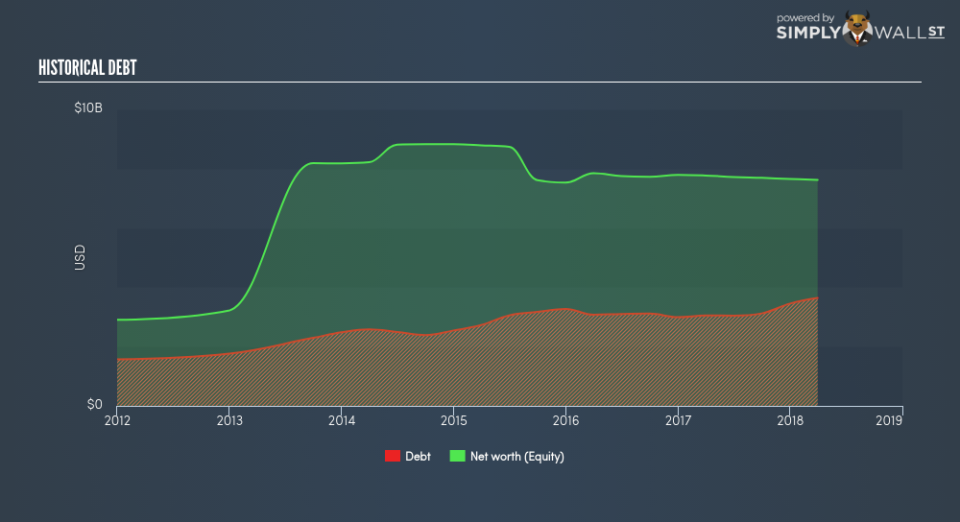Enable Midstream Partners LP (NYSE:ENBL): Time For A Financial Health Check

Stocks with market capitalization between $2B and $10B, such as Enable Midstream Partners LP (NYSE:ENBL) with a size of US$7.31b, do not attract as much attention from the investing community as do the small-caps and large-caps. Surprisingly though, when accounted for risk, mid-caps have delivered better returns compared to the two other categories of stocks. This article will examine ENBL’s financial liquidity and debt levels to get an idea of whether the company can deal with cyclical downturns and maintain funds to accommodate strategic spending for future growth. Note that this information is centred entirely on financial health and is a top-level understanding, so I encourage you to look further into ENBL here. Check out our latest analysis for Enable Midstream Partners
How much cash does ENBL generate through its operations?
Over the past year, ENBL has ramped up its debt from US$2.99b to US$3.45b , which is made up of current and long term debt. With this growth in debt, ENBL currently has US$5.00m remaining in cash and short-term investments for investing into the business. Additionally, ENBL has produced US$834.00m in operating cash flow over the same time period, resulting in an operating cash to total debt ratio of 24.17%, meaning that ENBL’s debt is appropriately covered by operating cash. This ratio can also be interpreted as a measure of efficiency as an alternative to return on assets. In ENBL’s case, it is able to generate 0.24x cash from its debt capital.
Can ENBL pay its short-term liabilities?
At the current liabilities level of US$1.28b liabilities, it seems that the business is not able to meet these obligations given the level of current assets of US$416.00m, with a current ratio of 0.33x below the prudent level of 3x.
Can ENBL service its debt comfortably?
With debt reaching 47.76% of equity, ENBL may be thought of as relatively highly levered. This is not unusual for mid-caps as debt tends to be a cheaper and faster source of funding for some businesses. We can check to see whether ENBL is able to meet its debt obligations by looking at the net interest coverage ratio. A company generating earnings before interest and tax (EBIT) at least three times its net interest payments is considered financially sound. In ENBL’s, case, the ratio of 4.2x suggests that interest is appropriately covered, which means that debtors may be willing to loan the company more money, giving ENBL ample headroom to grow its debt facilities.
Next Steps:
At its current level of cash flow coverage, ENBL has room for improvement to better cushion for events which may require debt repayment. Furthermore, its lack of liquidity raises questions over current asset management practices for the mid-cap. This is only a rough assessment of financial health, and I’m sure ENBL has company-specific issues impacting its capital structure decisions. I suggest you continue to research Enable Midstream Partners to get a more holistic view of the stock by looking at:
Future Outlook: What are well-informed industry analysts predicting for ENBL’s future growth? Take a look at our free research report of analyst consensus for ENBL’s outlook.
Valuation: What is ENBL worth today? Is the stock undervalued, even when its growth outlook is factored into its intrinsic value? The intrinsic value infographic in our free research report helps visualize whether ENBL is currently mispriced by the market.
Other High-Performing Stocks: Are there other stocks that provide better prospects with proven track records? Explore our free list of these great stocks here.
To help readers see pass the short term volatility of the financial market, we aim to bring you a long-term focused research analysis purely driven by fundamental data. Note that our analysis does not factor in the latest price sensitive company announcements.
The author is an independent contributor and at the time of publication had no position in the stocks mentioned.

